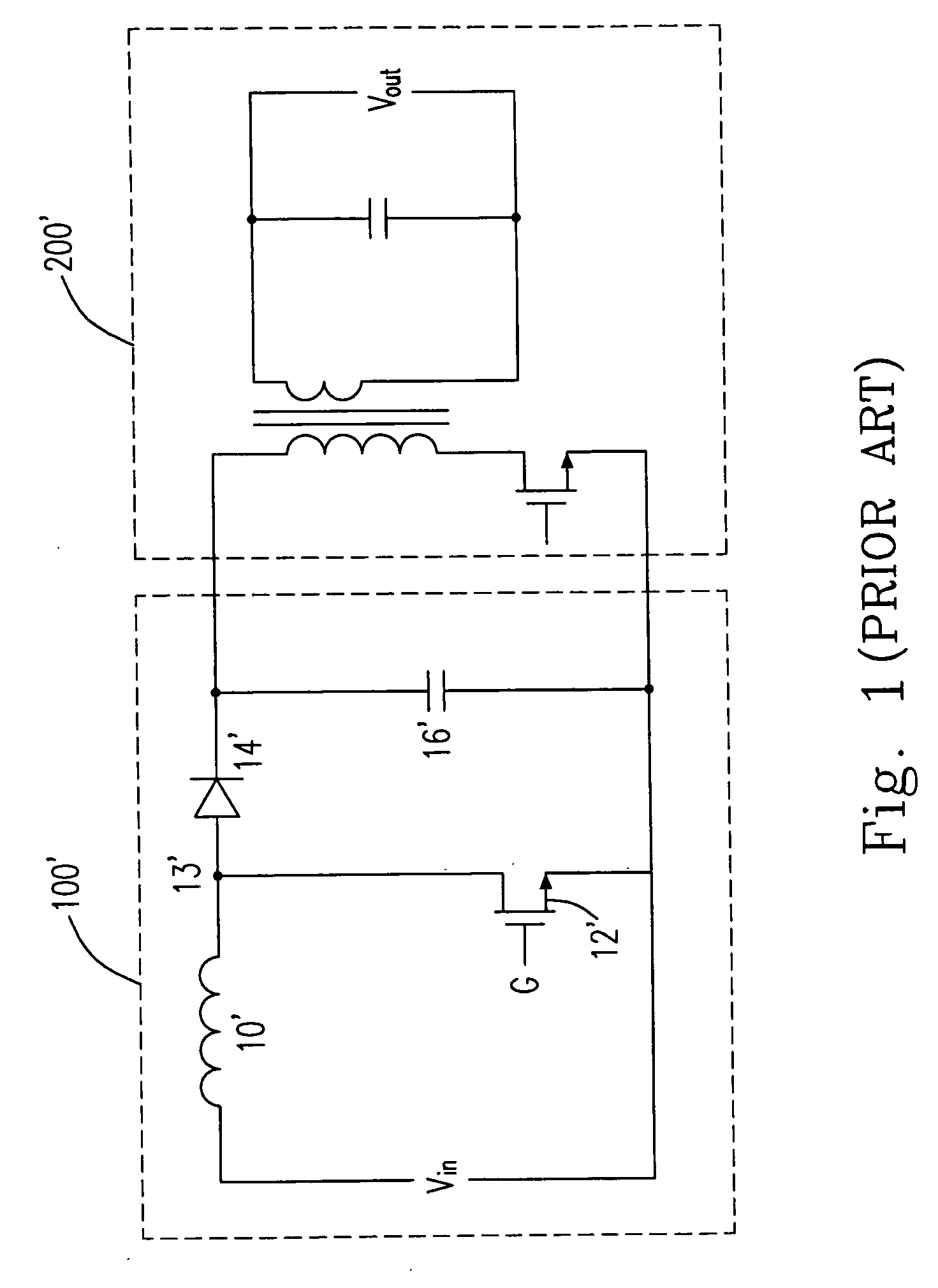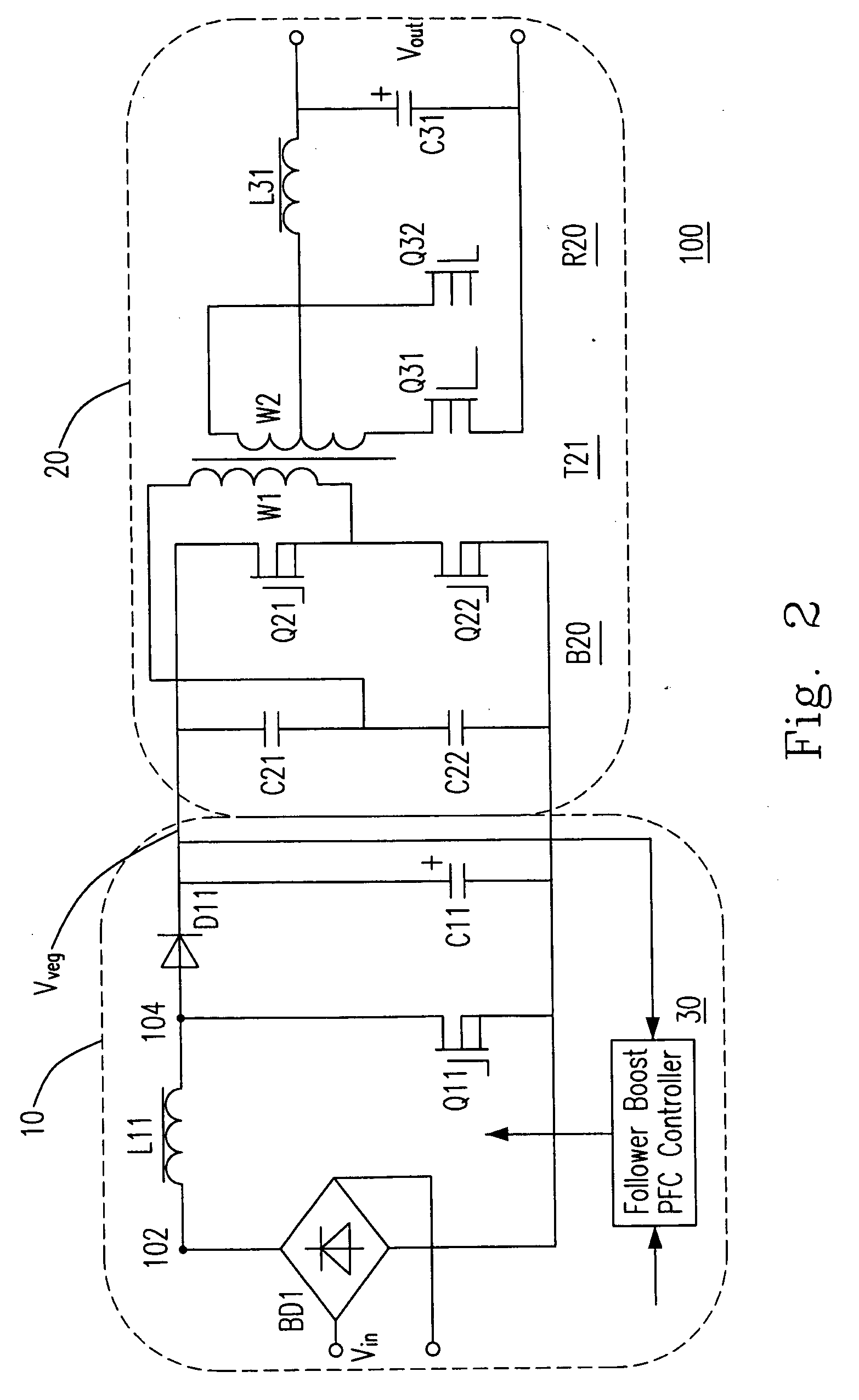High efficiency power converter with synchronous rectification
- Summary
- Abstract
- Description
- Claims
- Application Information
AI Technical Summary
Benefits of technology
Problems solved by technology
Method used
Image
Examples
Embodiment Construction
[0032] The present invention will now be described more specifically with reference to the following embodiments. It is to be noted that the following descriptions of preferred embodiments of this invention are presented herein for purpose of illustration and description only; it is not intended to be exhaustive or to be limited to the precise form disclosed.
[0033] Please refer to FIG. 2, which shows a schematic diagram of a power converter according to the first preferred embodiment of the present invention. The power converter is composed by a boost type PFC pre-regulator 10 and a DC-to-DC converter 20. The boost type PFC pre-regulator 10 is employed to rectify an ac input voltage Vin, then draw a sinusoidal input current from the ac input voltage Vin to meet the limits of harmonic current emission, and output a regulated bus voltage of which the amplitude varies with that of ac input voltage. The DC-to-DC converter 20 is used for converting the regulated bus voltage to an tight ...
PUM
 Login to View More
Login to View More Abstract
Description
Claims
Application Information
 Login to View More
Login to View More - R&D
- Intellectual Property
- Life Sciences
- Materials
- Tech Scout
- Unparalleled Data Quality
- Higher Quality Content
- 60% Fewer Hallucinations
Browse by: Latest US Patents, China's latest patents, Technical Efficacy Thesaurus, Application Domain, Technology Topic, Popular Technical Reports.
© 2025 PatSnap. All rights reserved.Legal|Privacy policy|Modern Slavery Act Transparency Statement|Sitemap|About US| Contact US: help@patsnap.com



